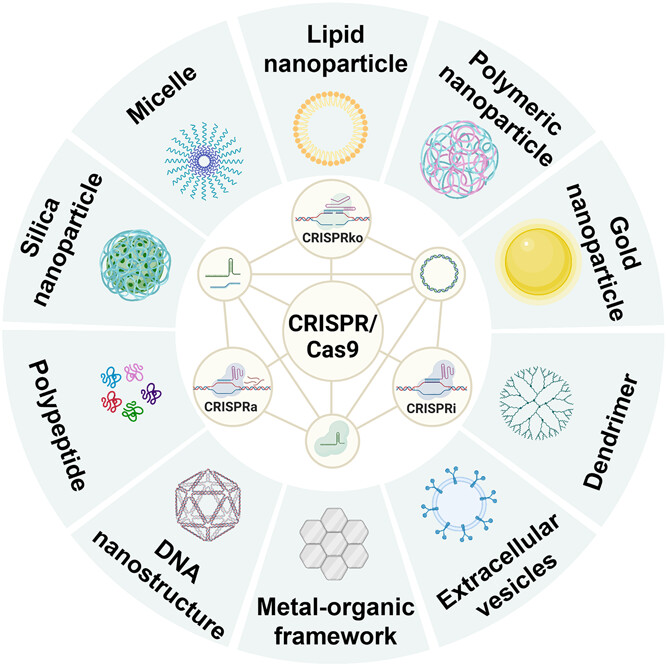MedComm-Biomaterials and Applications | Nanotechnology-based CRISPR/Cas9 delivery system for genome editing in cancer treatment

Open the phone and scan

Schematic of the CRISPR/Cas9 system and its nanotechnology delivery methods. The CRISPR/Cas9 system can be delivered in the forms of DNA, mRNA/sgRNA, or ribonucleoprotein (RNP). The gene editing tools based on CRISPR/Cas9 include CRISPR knockout (CRISPR KO), CRISPR interference (CRISPRi), and CRISPR activation (CRISPRa). Lipid nanoparticles, polymers, inorganic compounds, polypeptide, dendrimers, and extracellular vesicles are the most often employed substances for CRISPR/Cas9 system delivery. Created with Biorender.com.
The clustered regularly interspaced short palindromic repeats (CRISPR)/CRISPR associated protein 9 (CRISPR/Cas9) systems initiate a revolution in genome editing, which have a significant potential for treating cancer. A significant amount of research has been conducted regarding genetic modification using CRISPR/Cas9 systems, and 33 clinical trials using ex vivo or in vivo CRISPR/Cas9 gene editing techniques have been carried out to treat cancer. Despite its potential advantages, the main obstacle to convert CRISPR/Cas9 technology into clinical genome editing applications is the safe and efficient transport of genetic material owing to various extra- and intracellular biological hurdles. We outline the characteristics of three forms of CRISPR/Cas9 cargos, plasmids, mRNA/sgRNA, and ribonucleoprotein (RNP) complexes in this review. The recent in vivo nanotechnology-based delivery techniques for these three categories to treat cancer are then reviewed. In the end, we outline the prerequisites for effective and secure in vivo CRISPR/Cas9 delivery in clinical contexts and discuss challenges with current nanocarriers. This review offers a thorough overview of the CRISPR/Cas9 nano-delivery system for the treatment of cancer, serving as a resource for the design and building of CRISPR/Cas9 delivery systems and offering fresh perspectives on the treatment of tumors.
Article Access: https://doi.org/10.1002/mba2.70
More about MedComm-Biomaterials and Applications: https://onlinelibrary.wiley.com/journal/2769643x
Looking forward to your contributions.


